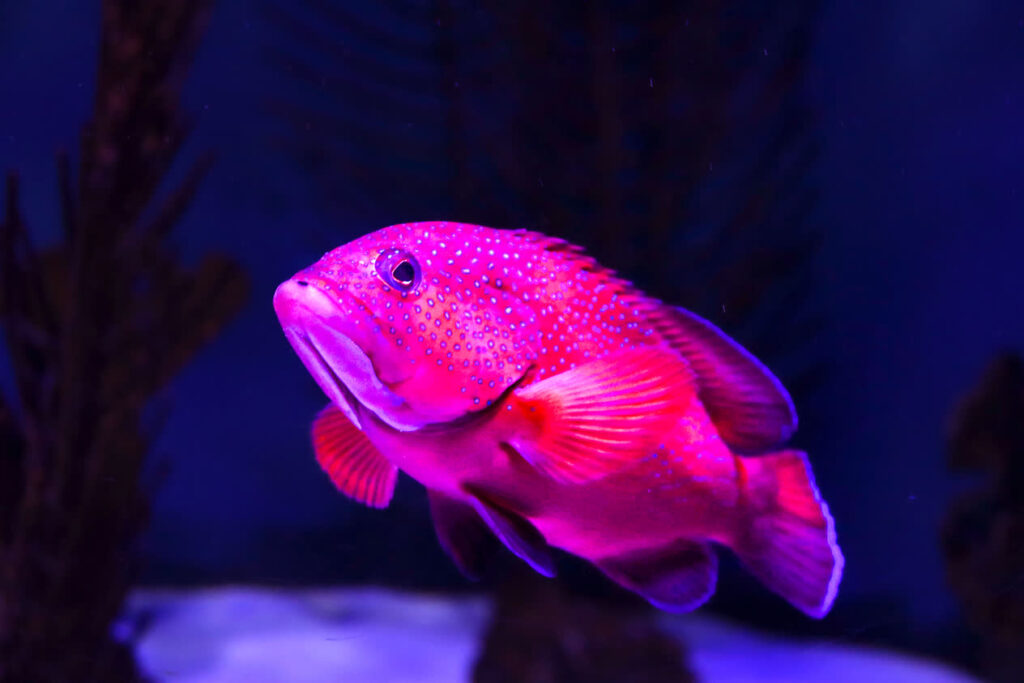Species Type:
Fishes
Common Name(s):
Coney grouper
Size:
Female coneys mature at 6 inches (16 centimeters) long and turn into males once they reach 8 inches (20 centimeters). The largest coney grouper ever recorded was 16 inches (41 centimeters) long.
Diet:
Coney groupers feed on small fishes and invertebrates like shrimps and crabs. This species is known for following eels into reefs and preying on whatever is flushed out.
Range & Habitat:
The coney grouper can be found in the western Atlantic Ocean, living in coral reef communities with clear water conditions. They can also be found hiding in caves and other crevices during the day.
Details:
The coney grouper is a “protogynous hermaphrodite,” meaning some individuals start life as females and later transition to males, producing both eggs and sperm at different points in their lifetime. These fish can be found in shallow clear water reef environments throughout the Atlantic and deeper clear water environments in the the Gulf.


